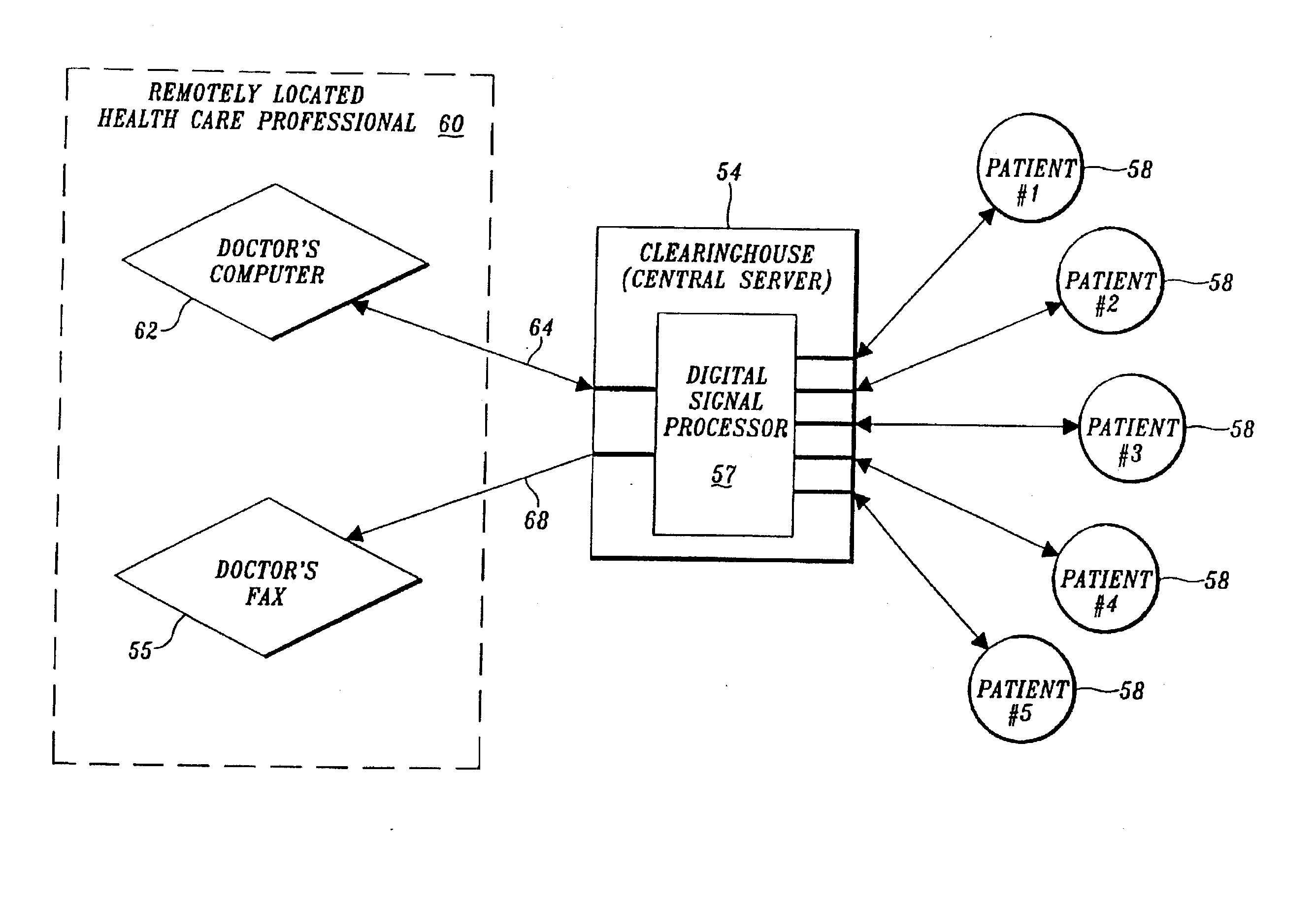Method and apparatus for remote health monitoring and providing health related information
a health monitoring and remote monitoring technology, applied in the field of self-care health monitoring arrangements, can solve the problems of insufficient method of recording information, not only requires subjective judgment of the system user, but also adds to the disadvantage or drawback of subcategories of blood glucose test results, and achieves memory and signal processing capability that is sufficient, simple interface, and little or no signal processing capability.
- Summary
- Abstract
- Description
- Claims
- Application Information
AI Technical Summary
Benefits of technology
Problems solved by technology
Method used
Image
Examples
Embodiment Construction
[0033]FIG. 1 depicts a self-care health monitoring system arranged in accordance with the invention. In the arrangement shown in FIG. 1, a data management unit 10 is electrically interconnected with a handheld microprocessor-based unit 12 via a cable 14. In the depicted arrangement, data management unit 10 also is electrically interconnected with a blood glucose monitor 16 of the type capable of sensing blood glucose level and producing an electrical signal representative thereof. Although FIG. 1 illustrates blood glucose monitor 16 as being connected to data management unit 10 by a cable 18, it may be preferable to construct blood glucose monitor 16 as a plug-in unit that is placed in a recess or other suitable opening or slot in data management unit 10. Regardless of the manner in which blood glucose monitor 16 is interconnected with data management unit 10, both that interconnection and cable 14 are configured for serial data communication between the interconnected devices.
[003...
PUM
| Property | Measurement | Unit |
|---|---|---|
| time | aaaaa | aaaaa |
| time | aaaaa | aaaaa |
| time | aaaaa | aaaaa |
Abstract
Description
Claims
Application Information
 Login to View More
Login to View More - R&D
- Intellectual Property
- Life Sciences
- Materials
- Tech Scout
- Unparalleled Data Quality
- Higher Quality Content
- 60% Fewer Hallucinations
Browse by: Latest US Patents, China's latest patents, Technical Efficacy Thesaurus, Application Domain, Technology Topic, Popular Technical Reports.
© 2025 PatSnap. All rights reserved.Legal|Privacy policy|Modern Slavery Act Transparency Statement|Sitemap|About US| Contact US: help@patsnap.com



